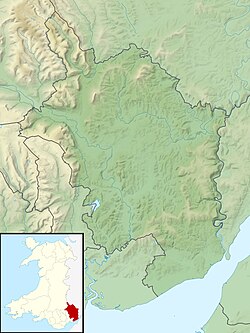| 9 Agincourt Street, Monmouth | |
|---|---|
 "No.9, its pediment botched" [1] | |
| Type | Commercial |
| Location | Monmouth, Monmouthshire |
| Coordinates | 51°48′42″N2°42′54″W / 51.8116°N 2.715°W |
| Built | C.17th century |
| Architectural style(s) | Georgian |
| Governing body | Privately owned |
Listed Building – Grade II* | |
| Official name | No.9 Agincourt Street |
| Designated | 27 June 1952 |
| Reference no. | 2242 |
9 Agincourt Street, Monmouth, Wales is a late 17th century townhouse which became the estate office of the agent of the Dukes of Beaufort in the mid 19th century. It is a Grade II* listed building. In commercial use since its construction, it now houses a firm of architects.
